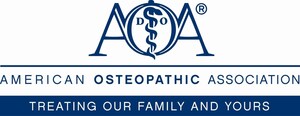CHICAGO, May 30, 2017 /PRNewswire/ -- Researchers found an average of only 38 percent of emergency medicine healthcare professionals—including physicians, physician assistants, and nurse practitioners—accurately estimated the costs for three common conditions seen in the emergency department.
Improving that percentage has the potential to lower costs for patients and the overall health care system, according to the study published in The Journal of the American Osteopathic Association.
A survey of 441 emergency medicine professionals asked them to identify the cost of care for three common scenarios: a 35-year old woman with abdominal pain, a 57-year old man with labored breathing and a 7-year old boy with a sore throat. The survey participants received a medical history, focused physical exam findings, diagnostic tests and interventions and were given four cost ranges for each scenario.
The correct cost range was chosen by 43 percent of respondents for the woman with abdominal pain, followed by 32 percent for the man with labored breathing and 40 percent for the child with a sore throat.
Kevin Hoffman, DO, an emergency medicine resident at Lakeland Health in Saint Joseph, Michigan, led the research and says these findings make a solid case for making the costs of care more transparent in the emergency room.
"Early in my residency, I realized I had no idea how much money I was spending with all the tests and medications I ordered—mostly because it's just not discussed," Dr. Hoffman said. "Osteopathic physicians take a whole-person approach to care. We believe it's important to account for the emotional, mental and physical effects of care—which increasingly means understanding the financial burden."
He adds that it is the responsibility of all physicians to control costs for patients and the health care system. However, identifying treatment options that are both economical and effective becomes even more critical in emergency department care, as it can be financially crippling for patients without insurance. Adding the price of tests and medications to the order entry system could result in lower costs while maintaining safe and positive outcomes, Dr. Hoffman added.
"It's a good tool that helps doctors make a connection between the treatment they're providing and the bill that's going to hit the patient—or in many cases, the taxpayers," said Dr. Hoffman. "If I order a drug to be given via IV, it's going to be a lot more expensive than if I give it orally, as a pill. In many cases, both are equally effective."
Demographic data was collected for each respondent, showing that geography had no bearing on correct answers. However, those working in larger institutions did lean toward higher cost estimates. Worth noting, respondents with higher levels of training believed they had a greater understanding of costs, yet performed no better in accurately selecting the correct range.
The complete study can be found at jaoa.org.
About The Journal of the American Osteopathic Association
The Journal of the American Osteopathic Association (JAOA) is the official scientific publication of the American Osteopathic Association. Edited by Robert Orenstein, DO, it is the premier scholarly peer-reviewed publication of the osteopathic medical profession. The JAOA's mission is to advance medicine through the publication of peer-reviewed osteopathic research.
SOURCE American Osteopathic Association
Related Links
WANT YOUR COMPANY'S NEWS FEATURED ON PRNEWSWIRE.COM?
Newsrooms &
Influencers
Digital Media
Outlets
Journalists
Opted In





Share this article